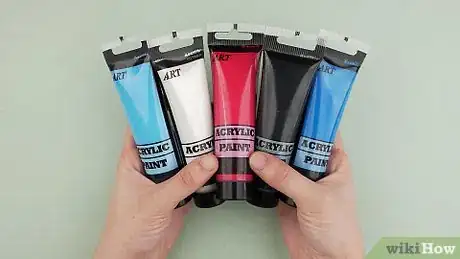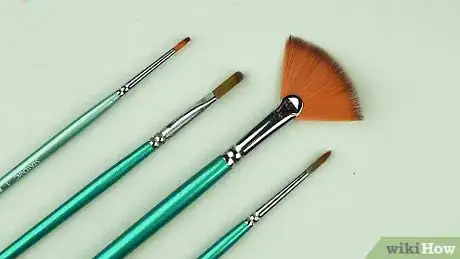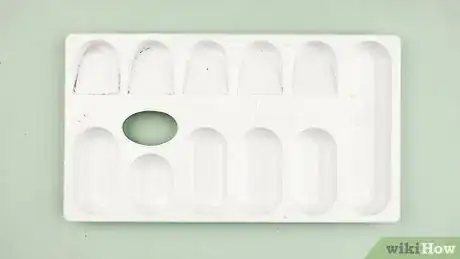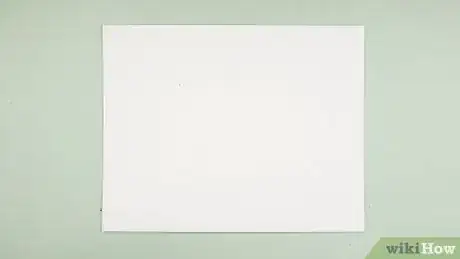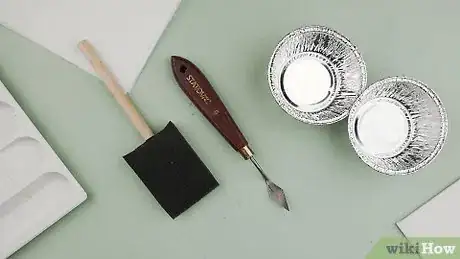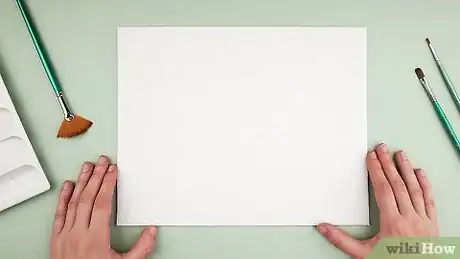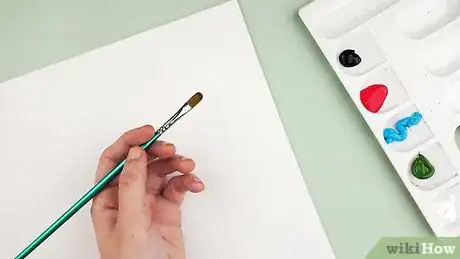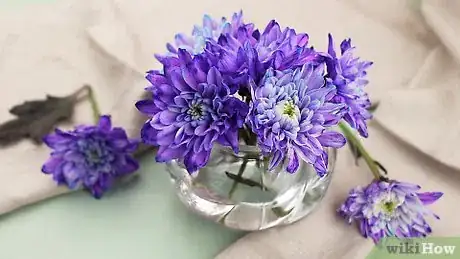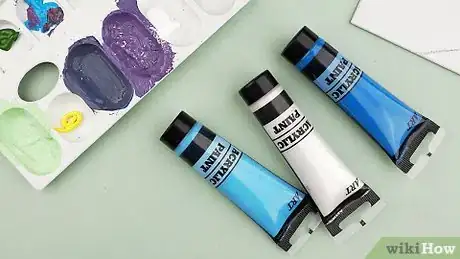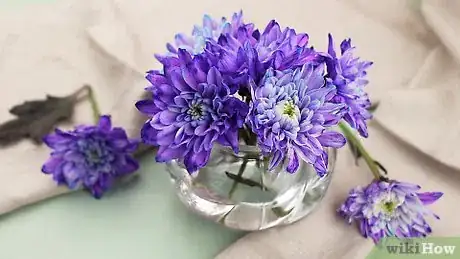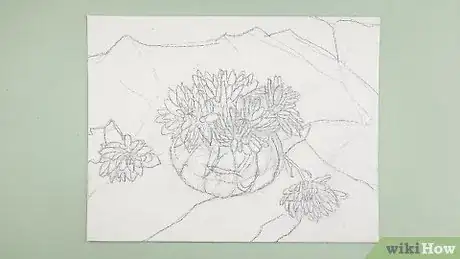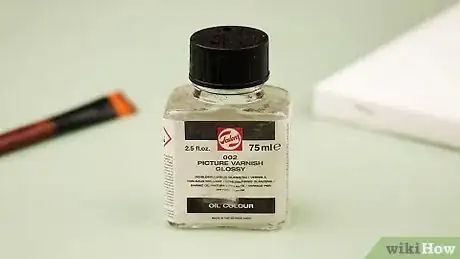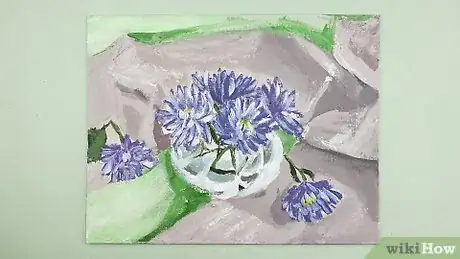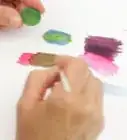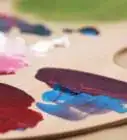This article was co-authored by Jeanine Hattas Wilson. Jeanine Hattas Wilson is a Professional Painter and the President of Hattas Public Murals, Inc. With nearly 20 years of experience, Jeanine specializes in creating, overseeing, designing, and painting murals. Jeanine holds a BA in Advertising from Marquette University and a Studio Painting Minor from The Milwaukee Institute of Art & Design. She has studied at The Atelier Artien in Paris, France, Los Angeles Academy of Figurative Art, and under renowned artists such as Robert Liberace, Michael Siegel, and William Cochran. To date, Hattas Public Murals has painted nearly 5,000 commissioned works of art in homes and commercial and public spaces.
There are 9 references cited in this article, which can be found at the bottom of the page.
wikiHow marks an article as reader-approved once it receives enough positive feedback. This article received 15 testimonials and 92% of readers who voted found it helpful, earning it our reader-approved status.
This article has been viewed 654,302 times.
If you're looking for the vibrancy and quality of oil paints without spending nearly as much money or time, then acrylic painting is for you. Picking up acrylic painting is a fulfilling hobby and a great way to produce artwork for your home and friends.
Steps
Getting the Right Supplies
-
1Choose your acrylic paint.[1] Acrylic paint comes in dozens of brands and is available in either tubes or jars. Purchasing acrylic paint is one of the rare instances in which it is better to splurge and get a pricier brand, such as Golden or Liquitex. Cheap brands of acrylic paint aren’t as thickly pigmented as the more expensive brands, and will therefore require 2-3 more coats of paint to get the same vibrancy and color of a single coat of a higher priced paint brand.
- To start, buy the most basic colors: titanium white, mars black, ultramarine blue, alizarin crimson, and yellow ochre. Most of the paint colors you'll need can be made from a combination of those few hues. As you paint more and more, you'll know which colors you want to add to your collection.
- Tubes of paint are typically preferred by beginners because you can purchase smaller quantities to start, but there is no difference in quality between a tube or a jar of acrylic paint.
-
2Select a handful of paintbrushes. Paintbrushes are rather diverse and are categorized by two factors: the shape of the brush tip, and the material of the bristles.[2] There are three different brush tip types: flat, rounded, and filbert (rounded and flat). There are many materials used to make paintbrush bristles, but the most common are synthetic and boar hair. Most beginner painters prefer synthetic brushes in an assortment of tip points.
- Visit an art supply store and feel a few different brushes for a good idea of what you prefer. Synthetic brushes are softer and easier to clean than real fur brushes.
- Unless you’re in it for the long run, don't splurge on the paintbrushes. Although having good paint brushes to work with can be beneficial, it is more important to have quality paint.
Advertisement -
3Find a palette. You’ll need something to mix paint on, and to store paint on between painting sessions. If you’re feeling frugal, a paper or plastic plate will work just fine. Any wide, flat, clean surface can be used as a workable palette. However, because acrylic paints dry so incredibly fast, it may be beneficial to invest in a stay-wet palette. These incorporate a wet sponge and special stay-wet paper that keeps your paint moist and workable for several weeks at a time.
- Keep plastic wrap or another cover of some sort on hand to preserve paint on your palette that you aren't using at the time.
- If you’re mixing large quantities of paint at once, it may be beneficial to have small cups/lids to store your paint between sessions. This will better preserve the acrylics than a plastic wrap covered palette.
-
4Decide what to paint on. Acrylic paint is thick and heavy, and therefore can only be used on a few surfaces. The most common and popular acrylic surfaces are stretched canvas or canvas board, watercolor paper, or treated wood. You should have success painting on anything that isn’t greasy, oily, nor very porous.
- If you’re afraid of painting on something expensive, start with watercolor paper and work your way up to canvas or wood.
-
5Gather other small items. With all of the aforementioned big-ticket items out of the way, you will need a few additional items that you likely have in your home. You will need 1-2 jars/cups for water, a palette knife, an old rag or cloth, a misting spray bottle for water, and soap to clean your paint brushes. These are all available in art supply stores if you don’t happen to have them, but none of them need to be specialty items.[3]
- Because acrylic paints dry notoriously fast, mist your painting/palette from time to time to keep the paints moist.[4]
- Consider wearing a smock or old shirt while painting to prevent staining your clothes with the acrylics.
- Some painters like to lay down newspapers on their tabletops to prevent large messes.
Getting Started
-
1Select a good location. As with most things, painting is done best in natural light. Set up your painting station near an open window or a room that has a lot of natural light. You’ll be able to see small nuances in your brush strokes and colors that you wouldn’t otherwise be able to pick out.
-
2Lay out all your supplies. Each artist has their own way of setting up their supplies, but it is best to get them all placed how you like them before you start painting. Fill your jars with water, get out the paintbrushes and paints you want to use, and put your palette in the most ideal location. You may want to put on your smock or old T-shirt at this time as well.
-
3Decide on your subject. As a beginner painter, you may have an idea of what you want to paint, or you may be looking for some direction.[5] Think about possible subjects or models you could use for your first painting. It is easiest to work from a 3-D object or photograph, rather than putting paint to something from memory. If you’re not sure what to paint, easy paint subjects for beginners include:
- A bowl of fruit
- A vase of flowers
- Objects in your home
- A sunrise/sunset
-
4Create a rough sketch. If you feel confident in your ability to paint exactly what you see, then you can go ahead and jump right into the painting. Most people, however, require an outline to follow along with their paint brush. Use a regular pencil to roughly sketch the outline of major shapes directly onto your canvas; don’t worry about details or shading too much.
- You can do multiple sketches on paper before ever turning to do one on canvas, just to make sure you are confident with your drawing of your subject.
-
5Mix your paints.[6] It is a common mistake to mix paints as you work, rather than mixing them all before you start. Use your time and paint efficiently by mixing all your paints - in all the colors you need - prior to starting your painting. In this case, it is better to be safe than sorry by mixing more paints than you are likely to use. You can store extra paint for future paintings, but it will be nearly impossible to mix the exact shade of paint twice.
- Use a color wheel as a helpful reference for mixing your paints. All the basic colors can be made by mixing the primary hues (red, blue, and yellow), and more specific colors can be made by mixing the primary and secondary hues.
- Remember, if you can’t get the exact shade of paint that you’re looking for with a limited paint palette, you can purchase nearly any color pre-mixed in tube or jar form from an art supply store.
Painting
-
1Find your light source. Color changes depending on the way light hits it, so before you begin painting your subject, locate the primary light source. Pay attention to this throughout the painting process; you should have lighter colors nearer the light source and darker colors further away. It may seem elementary, but picking out the light source before you begin will help keep your colors on track.
-
2Examine the composition of your subject.[7] Even if you’re only painting a single object, it must be layered with other surfaces or backgrounds. Look over your subject and determine what is nearest to you and what is furthest from you. Pay attention to overlapping, color changes, and texture. You will be recreating each of these things in your painting, so make sure you have a good idea of how to do it prior to starting.
-
3Begin painting the background.[8] When you paint, you will be layering upwards; therefore, painting from the back to the front is the easiest method. Start with your medium value colors, followed by your darkest colors, and then brightest, for the easiest application.
-
4Add in background details. Finish building up the basic colors, and then add details to the background. If it is a solid color, you should add shadows and light points. If your background is patterned or busy, add texture and movement with brush strokes in order to complete the layer.
-
5Paint in objects. As you begin to paint your subject, break it up into identifiable shapes and paint those in solid hues. As you build up shapes and colors, your subject will begin to appear. Work in small sections at a time, to make the painting process a bit less daunting.
- Some beginner painters find it easy to use a grid system when painting their subject. Split up your canvas into parts using an imaginary grid, and paint an entire grid space to finality before moving onto the next one.
- Remember to add medium value colors first, followed by darker, and then lighter colors. It is hard to go over a dark color with a light one, so working in this way will make layering of hues much easier.
-
6Add details using different painting techniques. When you’ve gotten the basic colors and shapes added, you can add the details with a few different painting techniques. These each focus on adding texture and movement through different paintbrush strokes and color applications.
- Stipple on paint by holding your paint brush vertically and tapping it onto the paper. This works best with a dry paintbrush and a small amount of paint, and will give the appearance of many small dots.
- Use a palette knife to sweep on broad strokes of color. For a rough, unedited paint look, paint with a palette knife. Coat the knife in a thick layer of paint, and move it across your canvas to load up thick layers of textured paint.
- Create a wash of color by thinning your paint with water. This gives an effect similar to watercolors, where the paint gradually lightens on your canvas. This is great for creating a gradation effect.
-
7Finish your painting. Paying close attention to your subject matter, add any finishing details you think are necessary to perfect your painting. Often this includes last dabs of light and dark, any outlines you may want to include, and finishing washes of color.[9]
Finishing Up
-
1Consider adding a varnish to your painting once the paint dries. Although it isn’t required, many painters add a finishing coat of varnish to seal the acrylic paints. This helps the paint to chemically bond to the canvas, and protects it better from damage.
-
2Clean your paint brushes and work station. It is imperative that you clean your paint brushes right after finishing up with them. Acrylic paint can severely damage and ruin paint brushes if left to dry in the bristles. Wash the brushes with cold water and soap until the water runs clear (warm/hot water will set the paint in the brushes). Wipe up any paint on your painting surface, and rinse the jars with water.
-
3Save any unused paint. Acrylic paint will last for several months in an air-tight container, so if you have any extra set it aside for a future painting. Scoop the paint into small containers with lids, or seal it into your stay-wet palette.
-
4Leave your painting to dry. Place your painting in a location to dry for 1–2 days. Acrylic paints have a very short dry time, but they should be left in an area where they won’t be disturbed in order to cure.
-
5Show off your artwork. Art is meant to be shared, so showcase your newly finished acrylic painting so that others can see your handiwork. Have it matted and framed if it is on paper or canvas board, or simply hang it in your home.
- To maintain an acrylic painting properly, you have to know the best way to clean it.
Expert Q&A
-
QuestionHow can I keep acrylic paint wet for longer so it doesn't try so fast when I'm painting?
 Jeanine Hattas WilsonJeanine Hattas Wilson is a Professional Painter and the President of Hattas Public Murals, Inc. With nearly 20 years of experience, Jeanine specializes in creating, overseeing, designing, and painting murals. Jeanine holds a BA in Advertising from Marquette University and a Studio Painting Minor from The Milwaukee Institute of Art & Design. She has studied at The Atelier Artien in Paris, France, Los Angeles Academy of Figurative Art, and under renowned artists such as Robert Liberace, Michael Siegel, and William Cochran. To date, Hattas Public Murals has painted nearly 5,000 commissioned works of art in homes and commercial and public spaces.
Jeanine Hattas WilsonJeanine Hattas Wilson is a Professional Painter and the President of Hattas Public Murals, Inc. With nearly 20 years of experience, Jeanine specializes in creating, overseeing, designing, and painting murals. Jeanine holds a BA in Advertising from Marquette University and a Studio Painting Minor from The Milwaukee Institute of Art & Design. She has studied at The Atelier Artien in Paris, France, Los Angeles Academy of Figurative Art, and under renowned artists such as Robert Liberace, Michael Siegel, and William Cochran. To date, Hattas Public Murals has painted nearly 5,000 commissioned works of art in homes and commercial and public spaces.
Professional Painter You can add a water-based glaze to your acrylic paint. That will keep it "open," or wet, for longer while you work with it.
You can add a water-based glaze to your acrylic paint. That will keep it "open," or wet, for longer while you work with it. -
QuestionWhat steps should I take to prepare the brush when changing color while painting?
 Community AnswerMake sure you wipe all of the color away. You can do this by rinsing it with cold water, and then drying it with a cloth.
Community AnswerMake sure you wipe all of the color away. You can do this by rinsing it with cold water, and then drying it with a cloth. -
QuestionHow do I paint leaves?
 Community AnswerUse light green or dark green to paint dots on a tree, then add details.
Community AnswerUse light green or dark green to paint dots on a tree, then add details.
References
- ↑ https://www.youtube.com/watch?v=SBhQlU_UqjY
- ↑ https://www.youtube.com/watch?v=7a8meJdWsVs
- ↑ http://www.art-is-fun.com/artists-supplies.html
- ↑ https://www.art-is-fun.com/how-to-stop-acrylic-paint-from-drying-too-fast/
- ↑ https://www.youtube.com/watch?v=C6y4MFNt7hQ
- ↑ https://www.mybluprint.com/article/11-hacks-for-mixing-acrylic-paint-perfectly
- ↑ https://www.artistsnetwork.com/art-techniques/composition/painting-composition-tips/
- ↑ https://www.youtube.com/watch?v=NcVeRlPu_5w
- ↑ http://www.finearttips.com/2010/01/painting-with-acrylics-the-mystery-explained/
About This Article
If you want to do acrylic painting, start by finding a good location with a lot of natural light so you can see your brush strokes. Then, choose your subject, like a bowl of fruit or vase of flowers. Before you start painting, mix all of your colors and make sure you have more of each color than you need to avoid the problem of trying to replicate a color you've run out of. To start painting, begin with the background and use your medium colors first. Next, layer on your darkest colors followed by the lighter shades. For tips on adding texture and movement to your picture, keep reading!
